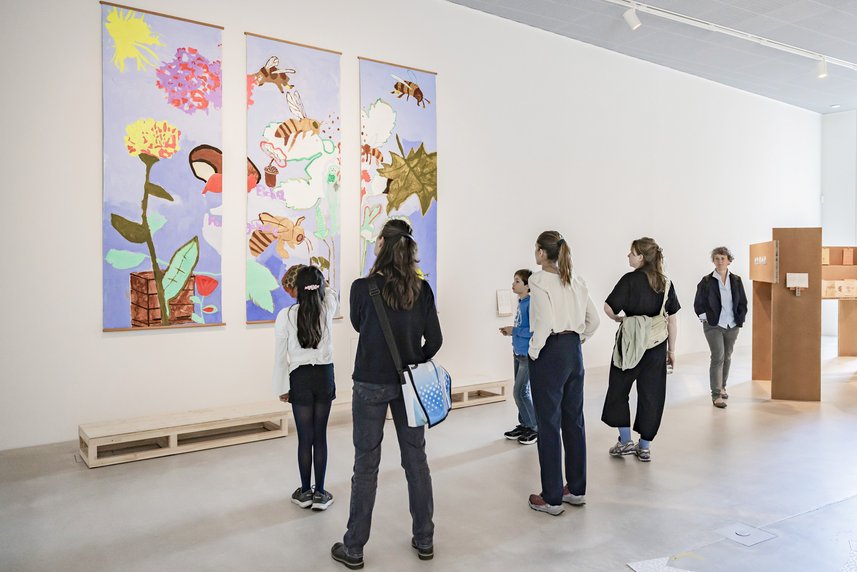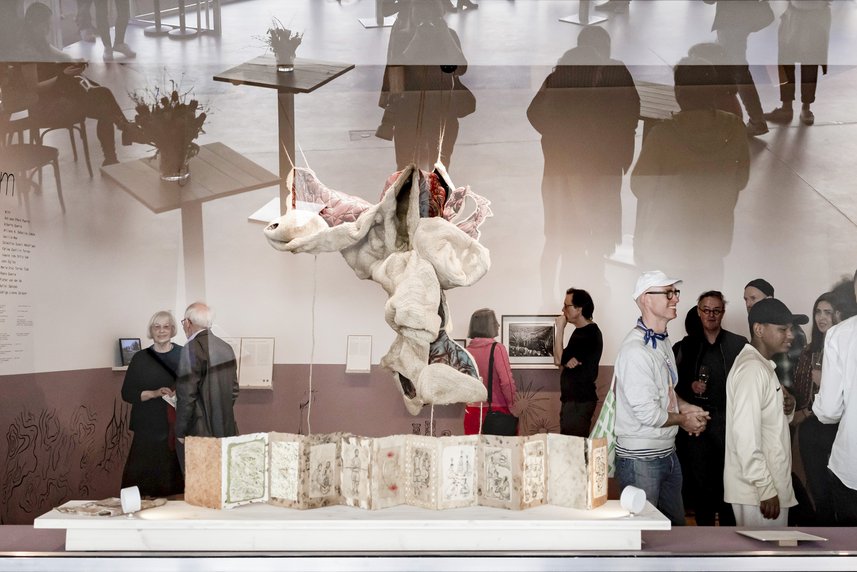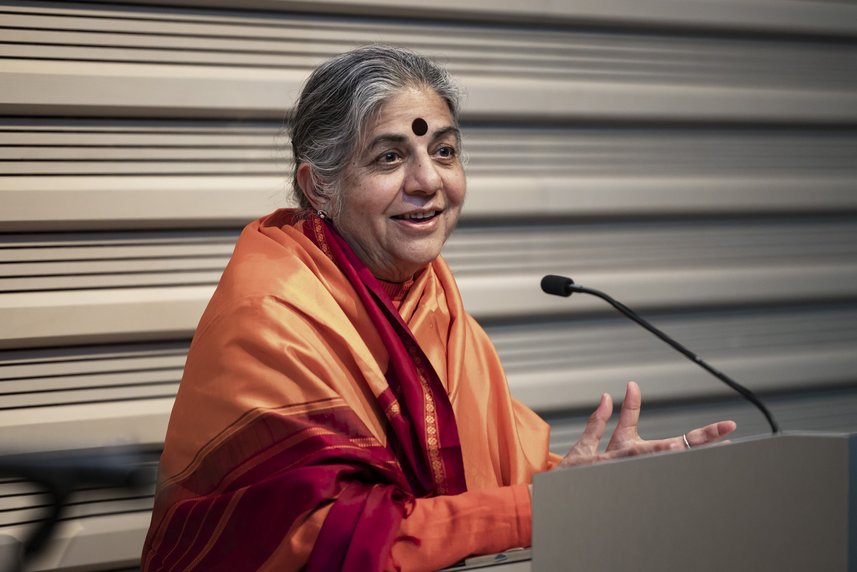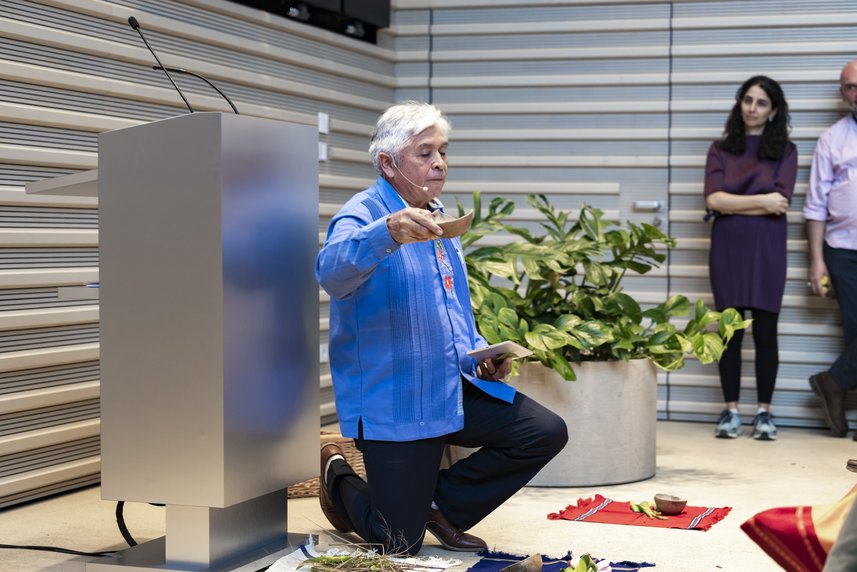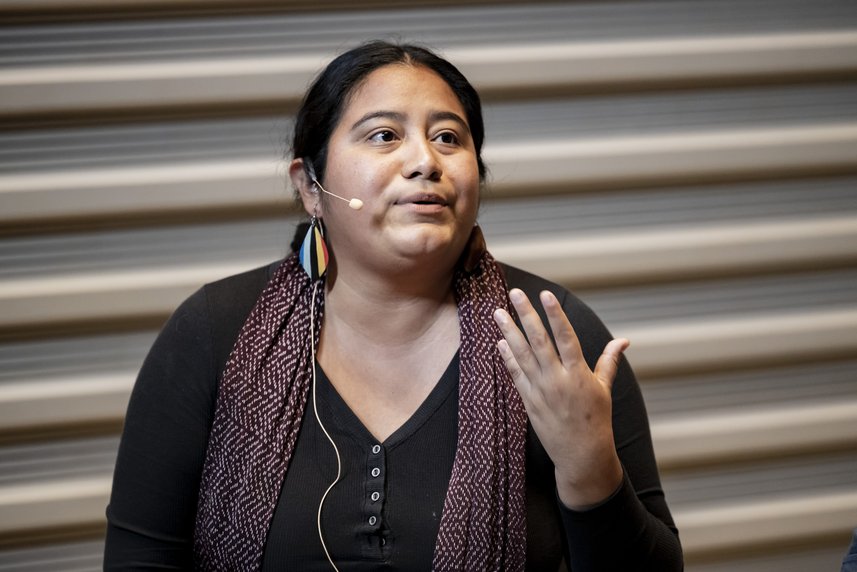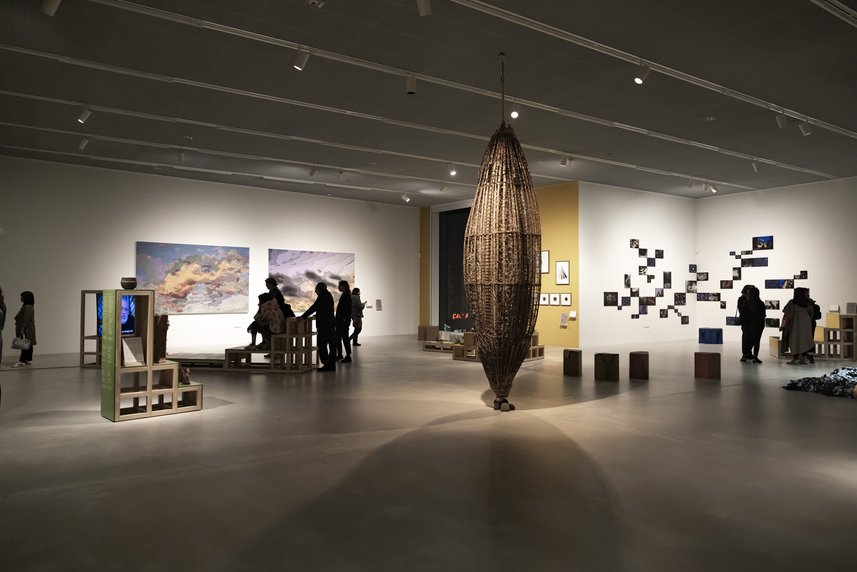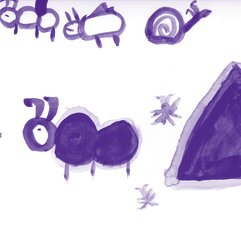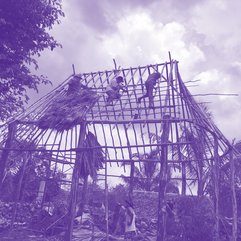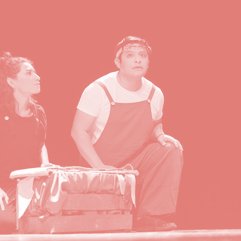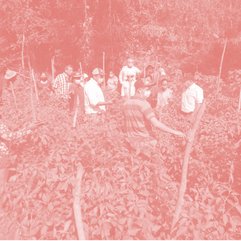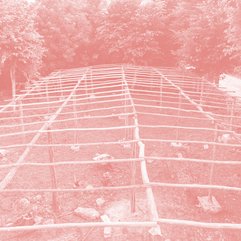Spore Initiative
Distant voices, several of them from U Yits Ka’an, have been brought to the Spore house in Berlin, Germany, to share with Berliners and many other people from different parts of the world. These voices are a distant echo of Maya wisdom about certain processes that to this day generate life and hope in the rural communities of Yucatan, such as the myth of Cuxaan Su’um, the Xook K’iin, and the work and cultivation of native bees. With an exhibition that gave visibility to these three narratives, this house-museum in the legendary German city was inaugurated.
Spore Initiative is a new organization that emerged during pandemic times. Its team members are of various nationalities (Egypt, Italy, Brazil, Germany, and Argentina) meeting on the grounds of art, museography, and cultural processes. As curators they respond to this new perspective of museographic exhibitions, where not only an original piece from a particular community or culture may be exhibited, as if looking only to the past, but living pieces, or rather processes, that generate life in rural communities—in this case, Maya culture, seen and told from the viewpoint of U Yits Ka’an, among others. As, in our Maya region, there are many other efforts also focused on the recovery and revaluation of traditions that we know and respect.
Following a period of dialogue and meetings with the Spore team, we agreed to exhibit some of the processes that the Maya people of Yucatan have continued to passionately cultivate: the observation and counting of the days or Xook K’iin, the ancestral myth or ancient narration of Kuxaan Su’um or the living rope, and the work of several beekeepers of the native stingless bee, connected to U Yits Ka’an. In essence, these are all part of a single reality: the struggles to maintain the ties to our identity and culture and the aspirations to continue producing food in the milpas and backyards of our villages, while respecting our forests and their owners. This presentation attempts to narrate not the fragmentation of three different pieces but their unity.
For this exhibition and representation, people who understand, experience, and perform these practices on a daily basis were invited, along with several, mostly young, Maya artists, like Cecilia Moo, Mauricio Collí, or Valiana Hernández and Ángel Kú who in their project Suumil Mookt’aan are working to recover the solar maya. Other visual artists were also invited, such as Ariel Guzik, who constructed what he calls La Casa de las Semejanzas (The House of Similarities), a space for stingless bees, and Rafiki Sánchez, an artist from Mérida, who creatively captured a representation evoking the living rope. Collí is an excellent graphic artist, commissioned to create the engravings that illustrate the book box (of the nest building Yuyum bird) about the Xunaan Kaab bee. We are in the process of making the necessary arrangements for these works of art to be exhibited in Yucatán.
For three consecutive days, we set out to celebrate the opening of this new house dedicated to the culture of the peripheries. The festivities began on April 21 with opening speeches by the founder of the initiative Hans Schöpflin and Spore director Antonia Alampi. On Saturday, April 22, we continued with the words and testimonies of those invited to share a message; guided tours of the exhibition rooms were offered; activities concluded on Sunday, April 23, with workshops, conversations, and exchanges of experiences, additional guided tours—including one led by children—and a performance about the bees. Many Berliners visited the exhibition during these days: children, school groups, teenagers, and adults.
Spore Initiative also offers a small space for planting vegetables, where visitors can learn about and practice agroecology as an alternative to conventional agricultural methods. Additionally, the house offers a library containing texts and books from different parts of the world. Some of them, when opened, form figures and images, while others are not printed with words but rather visual expressions addressing a particular theme. The library is a space of encounter and research.
In the main auditorium, the keynote speaker, Indian activist Dr. Vandana Shiva, set the stage for spontaneity and reflection, her presence and words illuminating the world’s native seeds. Her testimony was intertwined with the powerful voice of the young German agroecologist and activist Julia Bar-Tal, and that of yours truly, sharing the spirituality and the works of U Yits Ka’an, and our connections to these three life-generating processes mentioned at the beginning of this text. This dialogue coincided with Earth Day, on April 22.
It is incredible to see how the stories told from our Mayan region awaken enthusiasm and vitality in participants from other communities and cultures. Such was the case of a 12-year-old boy named Alexander, who after hearing the story of Kuxaan Su’um for the first time, was so fascinated that he offered to narrate this mythical story to the audience by translating it into German for the different groups that visited this space. Something similar happened to Celia, an Argentinean woman who has lived in Germany for over forty years. When she read and heard about the Xook K’iin, she recalled what her mother and grandmother taught her as a child about reading and observing the language of nature, there in the northern region of her native country. She tells me about an anecdote about her mother warning her of an imminent rainfall, and the sparkle I perceive in her eyes was like a prelude to the memory that had been activated. Meanwhile, as if in response to her story, thin columns of water ran down the windows of the building.
And this is the meaning of the exhibition: to activate not only the mind, but also memory, the heart, resilience, and, finally, the rebellion and the courage to keep alive these processes that generate life and hope. In this sense, Spore Initiative is a resonance body that echoes those distant voices that point to a healthy and ethically nourished future.
Perhaps it seems somewhat paradoxical that we must resort to these spaces to exhibit Maya processes, when in their everyday existence they are very vulnerable and exposed to being engulfed by this world of scientific and technological advances, such as artificial intelligence and so many megaprojects that exploit our land and Maya territory. We should not forget that, despite these advances and ventures, millions of people around the world continue to die of hunger, in large part due to an agricultural system that is dependent, ecocidal, and predatory—product of a utilitarian vision of Mother Nature.
We hope that other distant, peripheral voices, of distinct native communities, may also share their own processes, generators of life, and hope in this ludic and resilient space, so that we may mutually enrich one another and provide us with the resources needed to face the gales we may encounter in the future.
Berlin, Germany
April 2023
Translated from Spanish by Michele Faguet



